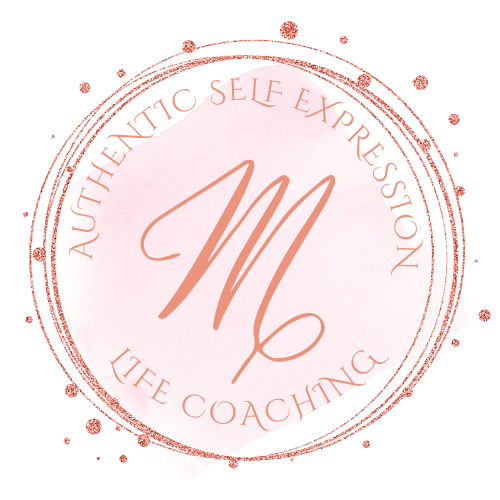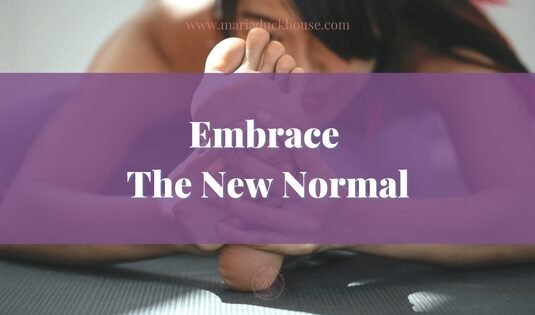The Journey Back to Yourself
You’ve spent so long being who others needed you to be that you’ve forgotten who you actually are. The people-pleaser. The perfectionist. The one who always has it together, even when you’re falling apart inside. You’ve mastered the art of reading rooms, anticipating needs, smoothing over discomfort. But somewhere in all that careful choreography, you lost yourself. And now you’re tired. Tired of the constant mental chatter that questions every decision. Tired of feeling like you’re performing your own life. Tired of waiting for permission to want what you want, feel what you feel, be who you are. What if I told you that personal growth isn’t about becoming someone new?
It’s about remembering who you were before the world taught you to hide. This is your gentle guide back home to yourself. Back to the woman who existed before she learnt that her worth was measured by how little space she took up, how few problems she caused, how easy she was to love.
She’s still there, waiting.
Nurturing Your Inner Voice Back to Life
Your inner voice didn’t disappear.
You just learnt to talk over it.
For years, you’ve been so tuned into everyone else’s needs, wants, and expectations that you’ve forgotten how to listen inward. You’ve become fluent in the language of others whilst losing your mother tongue.
But it’s not gone. It’s just quiet, patient, waiting for you to remember that it exists.
Creative Self-Discovery: Giving Voice to the Voiceless Parts
Creative self-discovery isn’t about becoming an artist.
It’s about becoming curious about the parts of yourself that have been silenced.
When was the last time you did something purely because it brought you joy? When did you last create something without worrying about whether it was good enough, useful enough, worthy enough?
Start here:
Morning colours: Each morning, choose a colour that represents how you’re feeling. You don’t need to understand why. Just trust the first colour that comes to mind.
Voice recordings: Record yourself talking about your day as if you’re talking to your best friend. Listen back with curiosity, not judgement. What do you notice about your real voice when no one else is listening?
Dream mapping: Keep paper by your bed and write down any fragments of dreams you remember. Dreams are your unconscious mind speaking in images and symbols.
Mia’s story:
Mia came to me convinced she had no creativity.
“I’m logical,” she said. “I solve problems. I don’t make art.”
Six months later, she was filling notebooks with poems she’d never planned to write.
Not because she’d suddenly become a poet, but because she’d finally given herself permission to play with words. “I didn’t know I had things to say,” she told me. “Turns out I’ve been collecting words my whole life, waiting for someone to say it was okay to use them.”

Building Self-Trust: Learning to Believe Your Own Experience
Self-trust isn’t confidence.
It’s something quieter, deeper. It’s the knowing that you can handle whatever comes. That your feelings are valid. That your instincts matter.
Most sensitive women struggle with self-trust because they’ve been told, subtly or directly, that they’re “too much” or “too sensitive” or “overthinking things.”
But what if your sensitivity isn’t a flaw? What if it’s your superpower?
Rebuilding self-trust:
Body wisdom: Before making decisions, pause and notice what your body is telling you. Does this choice make you feel expanded or contracted? Energised or drained? Your body knows things your mind hasn’t figured out yet.
Tiny promises: Make small commitments to yourself and keep them. I’ll journal for five minutes. I’ll go for a walk. I’ll drink water when I’m thirsty. Self-trust is built in these small moments of integrity with yourself.
Feeling validation: When emotions arise, resist the urge to analyse or fix them immediately. Simply say, “This feeling is valid. This feeling has information for me.” You don’t have to act on every feeling, but you can acknowledge its right to exist.
Anna’s breakthrough:
Anna had spent years second-guessing herself. Every decision required polling friends, family, colleagues. She’d lost faith in her own judgement completely.
We started with tiny choices. What to have for lunch. Which route to take to work. Whether to wear the blue jumper or the green one.
“It sounds ridiculous,” she said, “but choosing my own lunch without asking anyone felt revolutionary.”
Six months later, she changed careers, ended a relationship that was draining her, and moved to a new city. Not because she’d become fearless, but because she’d remembered that she could trust herself to navigate whatever came next.

Finding Emotional Freedom: Feeling Without Drowning
As a sensitive woman, you feel everything deeply.
The problem isn’t that you feel too much. The problem is that no one taught you how to feel deeply without drowning.
Emotional freedom isn’t about feeling less. It’s about feeling fully without being overwhelmed by the intensity.
Creating space for all feelings:
Emotional weather reports: Instead of “I’m angry,” try “There’s anger moving through me.” This simple shift reminds you that emotions are temporary experiences, not permanent states.
The feeling body scan: When strong emotions arise, scan your body. Where do you feel sadness? How does anxiety show up physically? Emotions are embodied experiences, and acknowledging them somatically helps them move through you rather than getting stuck.
Permission to feel: Give yourself explicit permission to feel whatever you’re feeling without immediately trying to fix, change, or understand it. Feelings are information, not emergencies.
Overcoming Overthinking and Self-Doubt
Your mind is not your enemy.
But it’s not your boss either.
That constant mental chatter, the endless loops of “what if” and “but maybe” and “I should have” – that’s not deep thinking. That’s anxiety masquerading as productivity.
Quieting the Inner Critic
The inner critic isn’t trying to hurt you.
It’s trying to keep you safe. It learnt, somewhere along the way, that if you could just anticipate every possible criticism, prepare for every potential rejection, perfect every possible flaw, maybe you’d finally be safe from judgement.
But it’s exhausting, isn’t it? And it doesn’t actually work.
Gentle ways to quiet the critical voice:
Name it: “Oh, there’s the critic again. Thanks for trying to protect me, but I’ve got this.”
Question it: “Is this thought helpful? Is it kind? Is it true?” If it fails all three tests, you don’t have to listen to it.
Redirect it: When the critic starts spiralling, give your mind a specific job. Count things you can see. Name colours around you. Focus on your breath. Give your mind something constructive to do instead of worry.
The inner critic dialogue: Write a conversation between your critical voice and your wise voice. Let them have it out on paper. You might be surprised by what your wisdom has to say to your worry.
Empowering Authentic Self-Expression
Authentic self-expression isn’t about being bold or dramatic.
It’s about being honest.
It’s saying “I don’t know” when you don’t know. It’s admitting when you’re struggling. It’s sharing your excitement without dimming it to make others comfortable.
The difference between authentic expression and people-pleasing:
Authentic ExpressionPeople-Pleasing"This doesn't feel right for me""Whatever you think is best""I need time to think about it""Yes, of course" (whilst internally screaming)"I'm excited about this!""It's not that big a deal""I disagree with you"Silent resentment"I'm struggling right now""I'm fine" (whilst falling apart)
Laura’s transformation:
Laura prided herself on being “easy-going.” She never had preferences, never disagreed, never caused problems. But she was miserable.
We started with tiny experiments in authenticity. Choosing the restaurant. Expressing an opinion about a film. Saying no to plans that drained her.
“I thought people would be angry,” she said. “But mostly they just… respected me more. And the ones who didn’t? I realised they weren’t really my people anyway.”

Navigating Perfectionism and Fear
Perfectionism and fear are best friends.
Perfectionism says “It has to be perfect before you can share it.”
Fear says “But it will never be perfect enough.”
Together, they keep you stuck.
But perfectionism isn’t really about high standards. It’s about control. It’s the belief that if you can just get everything right, you’ll be safe from criticism, rejection, failure.
Breaking free from the perfectionism trap:
Done is better than perfect: Set “good enough” as your standard instead of perfection. Good enough is still good. And finished is always better than perfect but never started.
Embrace the rough draft: Everything starts messy. Your first attempt doesn’t have to be your final attempt. Give yourself permission to be a beginner.
Fail forward: Reframe failure as data collection. What didn’t work? What can you learn? What will you try differently next time?
The fear conversation: Instead of trying to eliminate fear, get curious about it. What is fear trying to protect you from? How can you acknowledge its concern whilst still moving forward?
Your Personal Growth Journey: Practical Steps
Personal growth isn’t a destination.
It’s a way of being in relationship with yourself. A commitment to curiosity over certainty, compassion over criticism, courage over comfort.
Daily Practices for Sensitive Souls
Morning check-ins: Before you check your phone, check in with yourself. How am I feeling today? What do I need? What would support me today?
Evening reflections: What went well today? What challenged me? What am I grateful for? What do I want to release?
Boundary experiments: Practice saying no to small things to build your “no” muscle for bigger things.
Joy tracking: Notice moments of genuine joy and delight. What were you doing? Who were you with? How can you create more of these moments?

Creating Your Personal Growth Support System
You can’t heal in isolation.
But you also can’t heal in relationships that require you to stay small.
Green light people: These are people who celebrate your growth, support your dreams, and love you for who you are, not who they need you to be.
Yellow light people: These relationships are conditional. They support you when it’s convenient but withdraw when your growth threatens their comfort. Proceed with caution.
Red light people: These people actively discourage your growth, dismiss your feelings, or require you to stay stuck to maintain their comfort. Limit exposure when possible.
Working with a Coach
Sometimes the path home to yourself requires a guide.
Someone who’s walked this road before and can help you navigate the terrain. Someone who sees your light when you’ve forgotten it exists.
What compassionate coaching looks like:
A safe space to be completely honest without judgement
Gentle challenge when you’re ready to grow
Support for your sensitivity rather than trying to fix it
Tools and practices tailored to your unique journey
Someone who believes in your capacity for healing and growth
The Woman You’re Becoming
Personal growth isn’t about fixing yourself.
You were never broken.
It’s about remembering who you are underneath all the conditioning, all the shoulds, all the careful ways you learnt to move through the world.
It’s about trusting that your sensitivity is a gift, not a burden.
That your feelings are wisdom, not weakness.
That your voice matters, even when it shakes.
That you deserve love, especially your own.
The woman you’re becoming isn’t someone new.
She’s someone you’ve always been, finally given permission to exist.
She’s patient with herself. Kind to her mistakes. Curious about her feelings. Honest about her needs. Brave enough to disappoint people. Wise enough to trust herself.
She’s not perfect. She’s not fearless. She’s not always confident.
But she’s real. And she’s yours.
Recommended next personal growth steps: Choose one small way to honour yourself today. One boundary to set. One truth to speak. One moment of self-compassion to offer.
Your journey home to yourself begins with that single step.
And every step after that is just remembering that you were always worth coming home to.
Ready to Go Deeper?
If you are ready to stop overthinking and start creating from self trust, this is exactly what we explore together inside my 1:1 coaching sessions. Let us bring your vision to life in a way that feels aligned, grounded, and completely yours. Book a Session here.
With much love, Maria.

https://mariaduckhouse.com | Let’s connect on Instagram
Buy me a coffee



